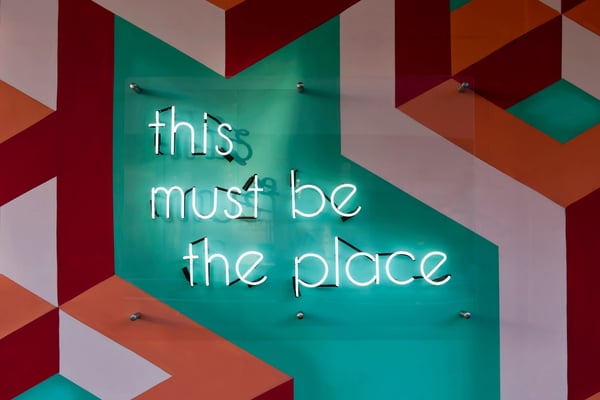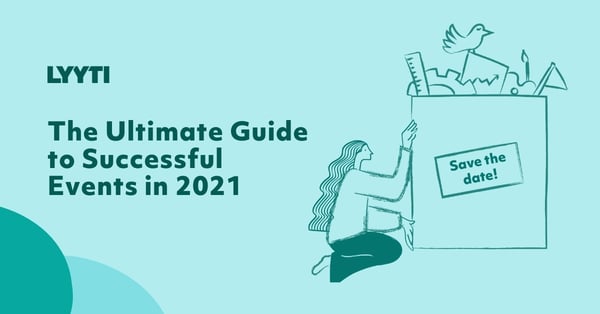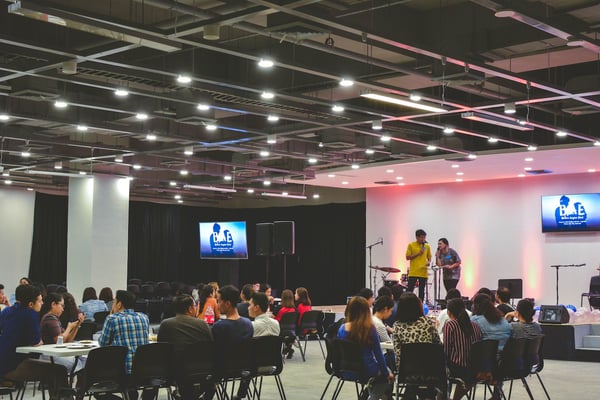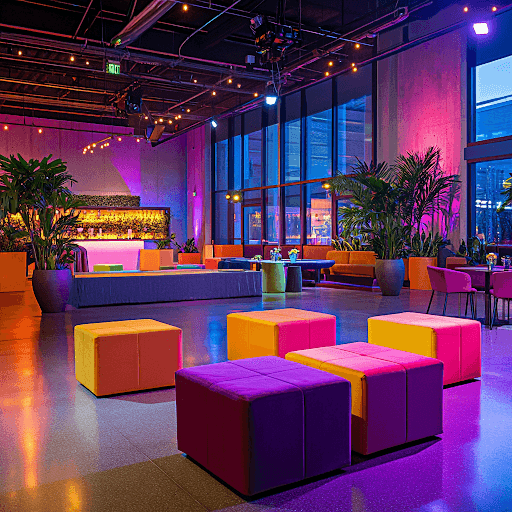At Lyyti, we annually compile a comprehensive report based on event data and insights from our users to help event organizers create even better and more competitive events. This year's report, drawing from over 81,000 events, provides insights into the latest trends in the event industry. In this article, we share the key insights and event trends for fall and winter 2024.
Insight 1: Live is the place to be
After years of restrictions and digital meetings, live events are making a strong comeback. In 2023, nearly 70% of all events organized through Lyyti were live events. Online events accounted for 25%, and just over 5% were hybrid. Participants value the opportunity to network and build connections face-to-face, something more challenging with digital events. However, the online format is perfect for certain types of events, such as shorter, educational sessions. For tips on creating more engaging webinars or online events, check out our blog here >>

The possibilities with live events are endless, and the live format is perhaps more important now than ever, especially with the rise of AI. Live events enable companies to build credibility around their brand and foster stronger relationships with their audience, something that AI can't replace. However, AI can be a valuable tool for streamlining many aspects of the event process.
With the upcoming fall and winter events, it's crucial for organizers to create engaging and memorable experiences. Consider carefully which format best suits your event. Use our guide - live, online, or hybrid to find the right format for each event you organize.
Insight 2: Increased expectations for content
One of the biggest challenges highlighted in our report is the rising expectations from participants. As the number of events increases, so do the demands on content quality. Participants want to be informed, entertained, and inspired. Niclas Rahm from Eventyr Nine Yards (one of the biggest event agency's in Sweden) calls this phenomenon edutainment, a mix of education and entertainment, and it is a growing trend. It's crucial to understand your audience and tailor your content to meet their specific needs and expectations.
We also see a significant focus on health and well-being, a trend that continues to grow. Events that include activities like yoga, mindfulness, and healthy food options are becoming more common. Participants appreciate the opportunity to care for both body and mind during the event, contributing to a more holistic experience. Offering these types of activities can make your event more attractive and memorable.
Technological innovations also play a significant role, with VR and AR offering new ways to engage participants. These technologies can create immersive experiences that stand out from traditional events, including everything from virtual tours and interactive workshops to gamified activities that engage and entertain attendees.
A counter-trend to this is to keep the events simple and focus on the DIY (do it yourself) concept, which has been trending recently. An example might be participants arriving at a venue where they build furniture or prepare meals and mix drinks themselves. It's a concept worth exploring.
Regardless of whether you focus on health, technology, minimalism, or something else, it's essential to prioritize relationship building and personalization to stand out from the competition. Use data to segment your audience and create content that is relevant and engaging for them. By focusing on offering valuable and customized experiences, you can ensure your event not only meets but exceeds participant expectations.
Insight 3: Optimizing Event Budgets
Is it a myth or a reality that companies are cutting their event budgets? When we asked industry experts, many argued that it’s not true that companies are reducing their event budgets - in many cases, it’s quite the opposite. However, they are more conscious about their investments. If the event department cannot demonstrate the profitability of events, it could negatively impact the budget. The same applies to other departments; for instance, if the marketing department can't prove their activities are profitable, their budget will also be affected. Therefore, it's crucial to measure and follow up on all your events to see which ones are profitable. An effective tool for this, which we use, is the Experience Value Score (EVS).
Need more budget for your events? The marketing department might be your solution. We see events as part of our Marketing Strategy, and therefore, events also fall under our marketing budget. Events are an incredibly effective tool for generating new leads and increasing brand awareness, instead of allocating the entire marketing budget to paid search and paid social. We strongly recommend that you include events in your marketing strategy if you haven't already done so, and not just for budgetary reasons.
Our report also highlights that collaborations are more important than ever. To cost-effectively and sustainably organize events, we need to work together and find smart partnerships that create better and more memorable experiences. The most unexpected collaborations can sometimes be the most successful.
Insight 4: Meet Me Thursday at 9 am!
According to our data, the most active months for events are September, October, and November, while July, August, and February are quieter periods. For online events, January, October, and November are the most popular months. Thursdays at 9:00 AM continue to be the most popular time for events, but it's important to test different days and times to see what works best for your audience. Choosing one of the less active event days and times might increase attendance at your event. Check out the full report here to see all the data on popular event months, days, and times.

Choosing the right time and date for your event can significantly impact attendance. Test different options and gather feedback from your participants to find the optimal times. By adapting to your audience's preferences, you can maximize engagement and the success of your event.
Conclusion
The fall and winter of 2024 look promising and exciting for the event industry. By focusing on creating engaging and memorable experiences, developing creative concepts, optimizing your resources, and streamlining your processes with AI, you can create even more successful events. Let's make 2024 a year of unforgettable events together!









